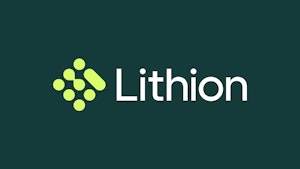AABC SAN DIEGO 2019: KEY TAKEAWAYS FROM THE CONFERENCE
Date
17.12.2024
Category
News

AABC SAN DIEGO 2019: KEY TAKEAWAYS FROM THE CONFERENCE
MONTREAL, QC, September 4, 2019– At the beginning of the summer, Lithion Recycling took part in the 19th edition of the Advanced Automotive Battery Conference (AABC) in San Diego, California from June 24 to June 27. This internationally renowned conference attracts electric vehicle battery specialists from around the world and gives these industry players a space to discuss the most recent technological advances. Nearly 500 participants came together to discuss the subject and attend multiple lectures. Here is a quick summary of the highlights of our time in California.
Lithium-ion battery recycling: The hot topic of the hour
The issue of Li-ion battery recycling is all too real and it is driving stakeholders to take action. There were more than five lectures, a tutorial, and a breakfast round table devoted to the subject. The hot topic among these folks? The electrification of transportation and, downstream from this green initiative, the significant increase in the number of batteries to be recycled that will be felt in the coming years. During these recycling-related events, all of which had packed rooms, several issues were brought up in terms of transportation, regulation, classification, and environment.
To be able to justify the use of electric transportation as a means of decarbonizing the environment, it is crucial that there be a battery recycling solution that is both economically and environmentally viable.
Recycling: A World of Possibility
One of the defining characteristics of the world of recycling is the fact that several techniques exist for recycling lithium-ion batteries. These vary widely in efficiency, sustainability, and stage of development, which is why events like AABC San Diego that allow industry players to discuss the subject are so important.
Lithion Recycling has developed an innovative hydrometallurgical process that makes it possible to recover 95% of a battery’s components, and that does so in a way that is both sustainable and affordable. The Lithion process is distinctive not only for its performance, but also in that it can be deployed rapidly.
A group of American researchers is working on “direct recycling,” which consists of recovering the cathode in its most intact form. The goal of this method is to minimize the manipulations required to reintegrate cathode materials into new lithium-ion battery cells. While the fundamentals of this technique make sense, it appears to have several issues yet to be solved with regards to quality and efficiency, which is why the researchers are so interested.
Very few companies were there to talk about pyrometallurgy, another lithium-ion battery recycling technique which consists of burning the material. Its poor efficiency and environmental impact have made this solution less and less relevant to the industry.
The idea of giving lithium-ion batteries a second life was another notable subject of the conference. Several solutions were identified, ranging from recharging stations to commercial and residential storage all the way to telecommunications. The idea there is to extract as much value as possible from an existing product before recycling it.
While the idea looks good on paper, there are many issues that need to be solved for this industry to prosper: safety, performance, volume management, cost, compatibility, etc. Some stakeholders find these issues to be an impediment to giving a second life to batteries while other see them as business opportunities. Although these two schools of thought clash on the issue of how batteries at their end of life should be managed in the short term, everyone agrees that recycling will be essential at the end of the road.
Raw Materials
Another prominent subject at this conference was management of raw materials and the whole bundle of problems that stems from it. When you say “battery” you’re also talking about manufacturing them. And that manufacturing requires rare and strategic resources (lithium, cobalt, nickel, manganese, graphite). This raises several questions.
- How can we ensure a lasting supply of these resources over the long term?
- How can we reduce the social, environmental, and economic impacts of mining?
- What strategies can car and manufacturing companies put forward to secure their supply chain and position themselves as leaders in the electric transportation market?
This is where lithium-ion battery recycling comes in. It goes without saying that recovering strategic components from batteries will play a central role in the green energy transition. Recycling these batteries will both enable the long-term availability of resources and reduce the harmful effects of mining. It thus becomes a new supply source for businesses that is reliable, economical, and green.
All in all, lithium-ion battery recycling can no longer be ignored in the electrification of transportation; it is at the very heart of industry conversations. Interest in the topic is plainly evident in the palpable energy and the ever-growing crowds at events dedicated to the subject.